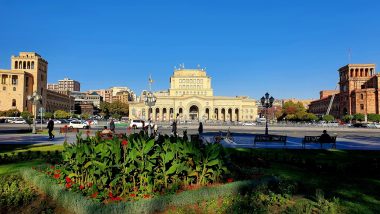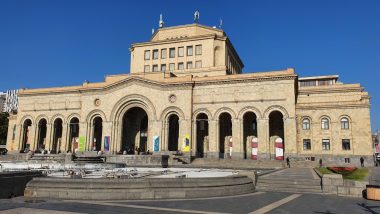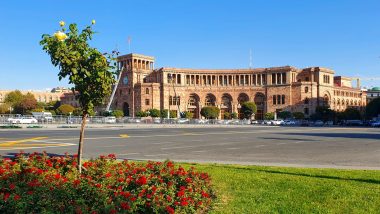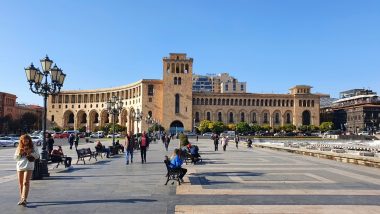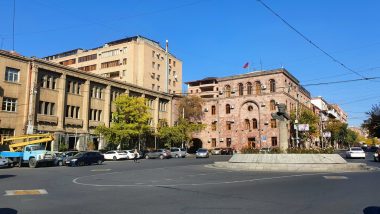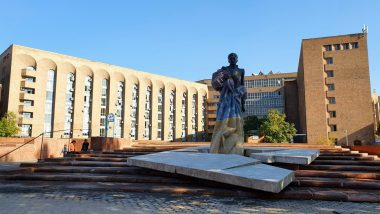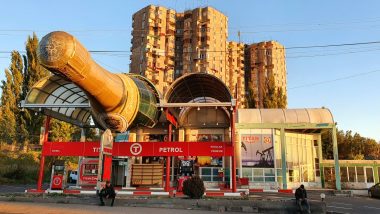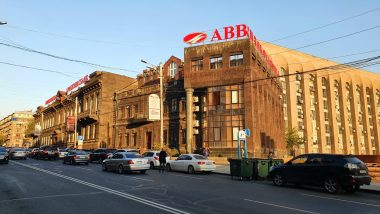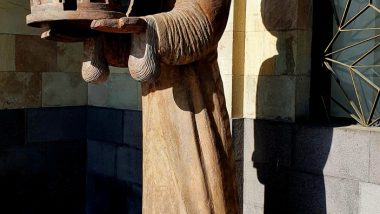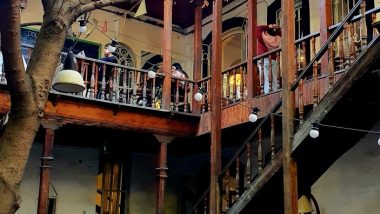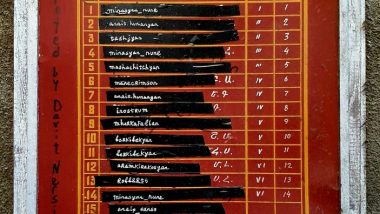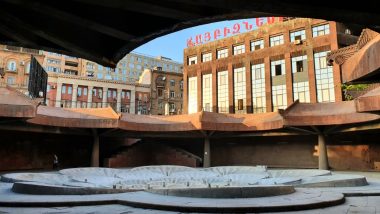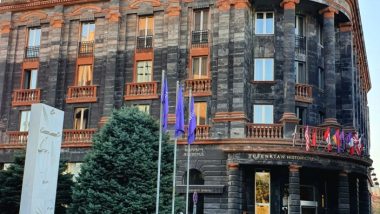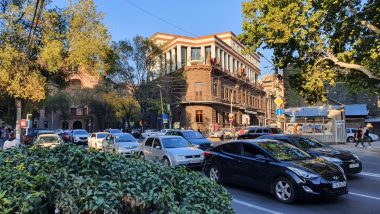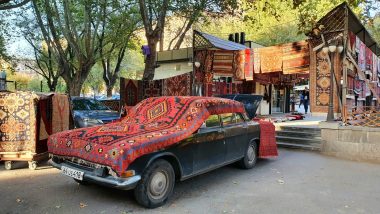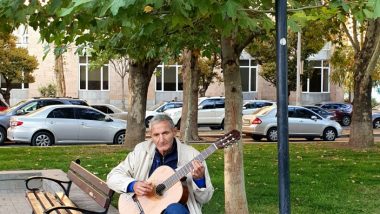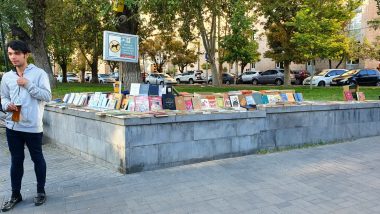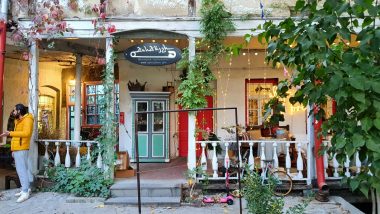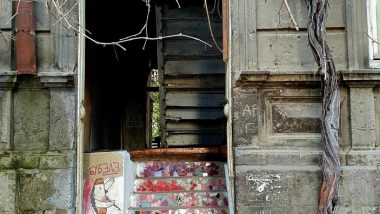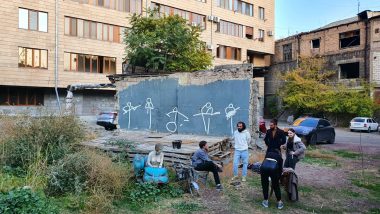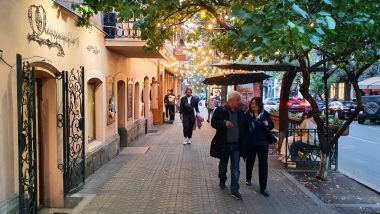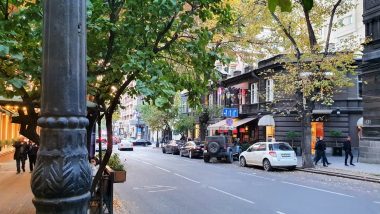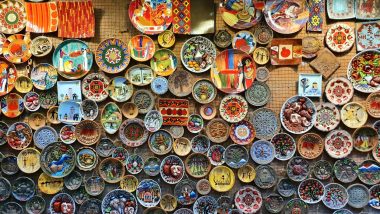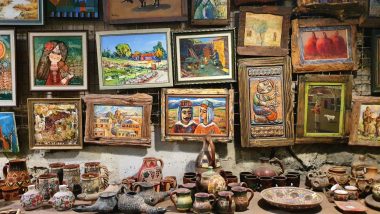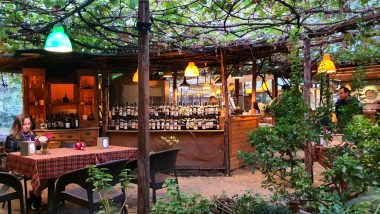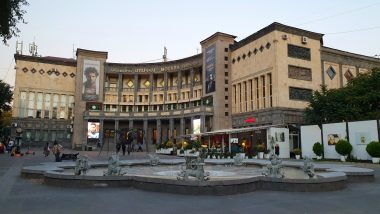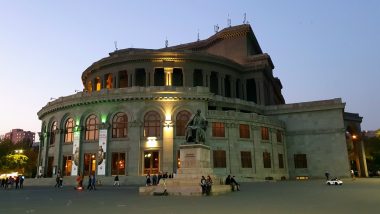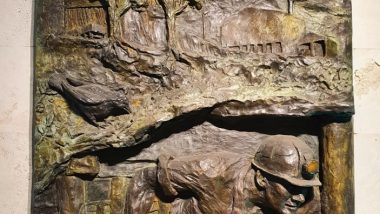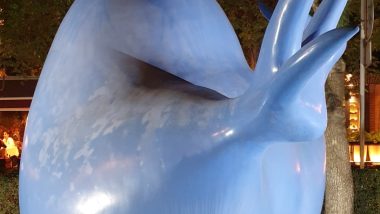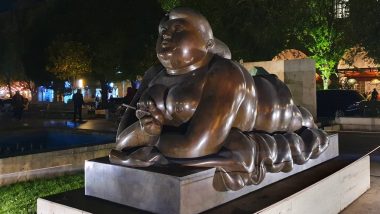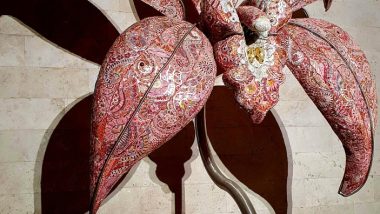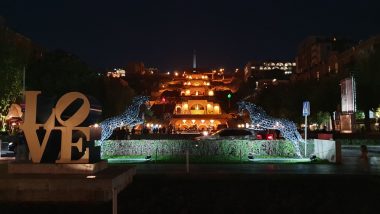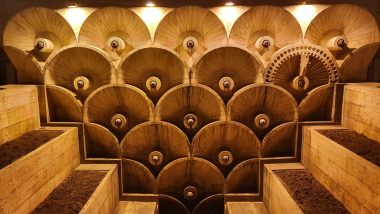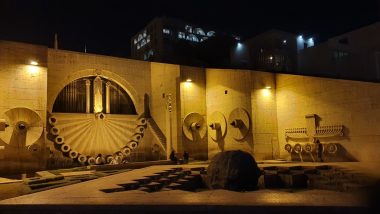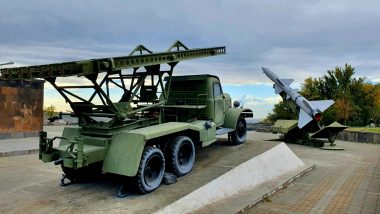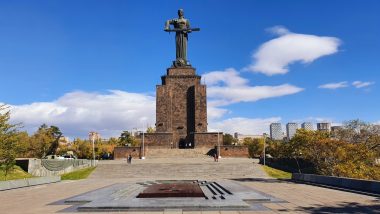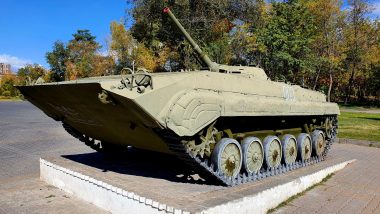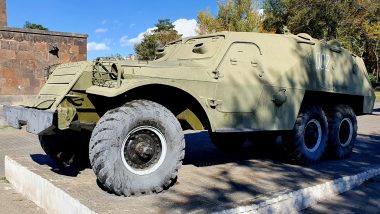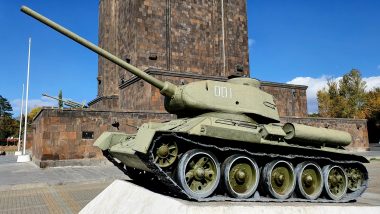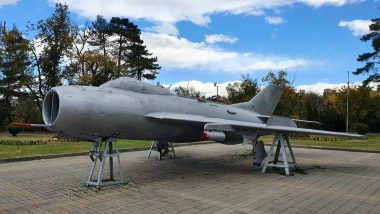We spent a few days in Yerevan, the capital of Armenia. The city has a fine natural setting; it climbs the hillsides from the deep trench of the Hrazdan River framed by the extinct volcanic peaks of Mount Aragats and Mount Azhdaak to the north and Mount Ararat across the Turkish border to the south. Though first historically recorded in 607, Yerevan dates by archaeological evidence to a settlement on the site of the fortress of Yerbuni in 783 BC. The city developed as an essential trade focus and has had a long history of siege and storm. At different times it came under the Romans (a ruined fortress remains), Parthians, Arabs, Mongols, Turks, Persians, Georgians, and Russians. In 1582 it fell to the Turks, in 1604 to the Persians, and finally, in 1827, to the Russians. In 1920 Yerevan became the capital of the independent Armenian republic. It remained the capital during Soviet rule and of renewed independence. This is a city of contradictions – top-of-the-line Mercedes sedans share the roads with Ladas so old they should be in museum collections; traditional taverns serving barbecue meats and fruit vodka sit next to chic European-style wine bars, and street fashions range from hipster to babushka with many weird and beautiful variations in between. It is not easy to find traces of the city’s ancient past remain, so we joined a free city tour (tip 10000 AMD/3 pax) which brought us around Soviet-era buildings and modern structures into old archways. Through them, we went like through a portal into a different world – we saw gorgeous 19th-century balconies and beautiful hidden corners of the old city. Yerevan also has many theatres and museums.
Parking location – Yerevan: 40.196086N 44.524739E



